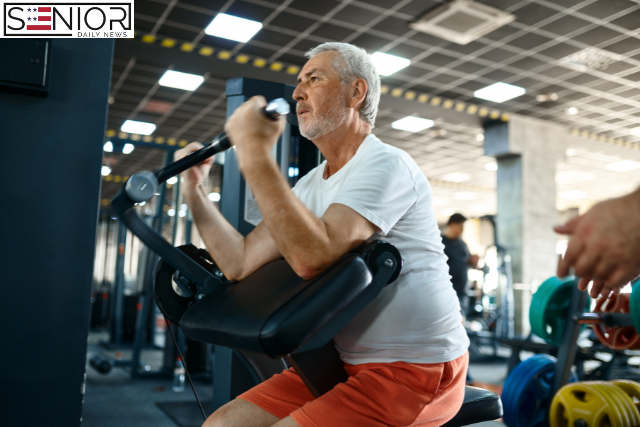Natural Ways to Prevent Sarcopenia: Strengthen Your Body as You Age

Sarcopenia, the age-related loss of muscle mass and strength, is a silent thief of independence and quality of life. Often beginning as early as age 30 and accelerating after age 60, sarcopenia affects mobility, balance, and overall health. The good news? You don’t have to accept muscle loss as inevitable. With the right natural strategies, you can delay or even prevent sarcopenia and maintain strength well into your golden years.
This article explores natural ways to prevent sarcopenia, focusing on nutrition, physical activity, lifestyle, and supportive habits—crafted with a human touch and tailored to meet both Google AdSense standards and real-life needs.
What Is Sarcopenia?
Sarcopenia is the progressive loss of skeletal muscle mass and function that comes with aging. It can lead to weakness, frailty, and a higher risk of falls and fractures. Unlike osteoporosis, which involves bone density loss, sarcopenia directly affects the muscles that support your frame and allow movement.
Symptoms of sarcopenia include:
- Decreased muscle size and strength
- Difficulty climbing stairs or standing from a seated position
- Slower walking speed
- Loss of endurance
- Poor balance and coordination
Why Prevention Matters
Muscle isn’t just for bodybuilders. It supports metabolism, insulin regulation, joint stability, and even cognitive function. Preventing sarcopenia helps seniors remain independent, reduce fall risk, and stay active.
Fortunately, a proactive and natural approach can make a significant difference.
1. Prioritize Protein-Rich Nutrition
Protein is the cornerstone of muscle maintenance. As you age, your body becomes less efficient at using protein to build muscle. Therefore, seniors actually need more protein than younger adults.
How much protein is enough?
Experts recommend 1.0 to 1.2 grams of protein per kilogram of body weight for healthy older adults, and more for those who are ill or recovering.
Best Natural Protein Sources:
- Eggs
- Greek yogurt
- Lentils and beans
- Chicken, turkey, and lean beef
- Fish, especially salmon and sardines
- Tofu and tempeh
- Cottage cheese
Pro Tip: Spread protein intake throughout the day rather than consuming it all at once.
2. Engage in Strength Training
Resistance training is the single most effective way to combat sarcopenia. It stimulates muscle growth and improves strength and coordination.
Examples of Resistance Exercises:
- Bodyweight squats
- Wall push-ups
- Resistance band workouts
- Light dumbbell exercises
- Leg lifts or seated leg extensions
How often?
Aim for 2 to 3 strength-training sessions per week, targeting major muscle groups. Consistency is key.
3. Embrace Regular Physical Activity
In addition to strength training, keep your body moving with aerobic and balance exercises.
Try:
- Brisk walking
- Swimming or aqua aerobics
- Cycling
- Tai Chi or yoga
- Dancing
These exercises support cardiovascular health, improve balance, and help maintain a healthy weight, which reduces stress on your joints.
4. Get Enough Vitamin D
Vitamin D plays a critical role in muscle function, bone strength, and immune health.
Sources of Vitamin D:
- Safe sun exposure (15–30 minutes a day)
- Fatty fish (salmon, mackerel)
- Fortified foods (milk, cereal)
- Egg yolks
- Supplements, if prescribed
Older adults often have a deficiency due to reduced skin synthesis and less sun exposure, so have your levels checked regularly.
5. Incorporate Omega-3 Fatty Acids
Omega-3s, especially those found in fatty fish like salmon, help reduce inflammation and may boost muscle protein synthesis.
Natural Omega-3 Sources:
- Salmon, mackerel, and sardines
- Flaxseeds and chia seeds
- Walnuts
- Algae-based supplements (vegetarian option)
Studies show that omega-3s can enhance the effectiveness of resistance training in older adults.
6. Prioritize Sleep and Recovery
Muscles rebuild during rest—not while you’re working out. Poor sleep can sabotage muscle recovery and increase levels of cortisol, a stress hormone that breaks down muscle.
Tips for Better Sleep:
- Maintain a consistent bedtime
- Avoid screens an hour before bed
- Limit caffeine after midday
- Keep your bedroom cool, dark, and quiet
Aim for 7 to 9 hours of quality sleep each night to maximize recovery and muscle health.
7. Limit Sugar and Ultra-Processed Foods
A diet high in sugar and processed foods contributes to inflammation and insulin resistance—both of which hinder muscle maintenance.
Cut back on:
- Sugary drinks
- Processed snacks (chips, cookies)
- Refined carbs like white bread and pastries
Choose whole, nutrient-dense foods that support your energy levels and muscle function.
8. Stay Hydrated
Muscle tissue is made up of about 75% water. Dehydration reduces muscle performance and increases fatigue.
Drink 6 to 8 cups of water daily, more if you’re physically active or in a warm climate. Herbal teas and water-rich foods like cucumbers and watermelon also help.
9. Avoid a Sedentary Lifestyle
Long periods of inactivity lead to muscle loss. Even if you exercise regularly, sitting too long during the day can weaken muscles.
Simple Strategies:
- Stand or walk during phone calls
- Set a reminder to get up every 30–60 minutes
- Stretch while watching TV
Micro-movements matter. Keeping active throughout the day supports muscle health.
10. Monitor and Maintain a Healthy Weight
Both obesity and being underweight can accelerate muscle loss. Fat tissue secretes inflammatory chemicals that harm muscles, while being underweight deprives the body of nutrients necessary for muscle maintenance.
Work with a healthcare provider or dietitian to achieve and maintain a healthy body composition.
FAQs About Sarcopenia and Prevention
Q: Can sarcopenia be reversed?
A: Early stages of sarcopenia can often be improved or reversed with consistent exercise, proper nutrition, and lifestyle adjustments.
Q: How do I know if I’m losing muscle?
A: Common signs include weakness, slower walking speed, difficulty standing, and visible muscle loss in arms or legs.
Q: Is walking enough to prevent sarcopenia?
A: Walking is excellent for cardiovascular health but should be paired with resistance training for effective muscle maintenance.
Q: Are protein supplements safe for seniors?
A: Yes, if used appropriately and recommended by a healthcare provider. Whey protein or plant-based powders can be helpful for those with low appetite.
Q: Does aging automatically mean muscle loss?
A: Not necessarily. With proactive lifestyle habits, many older adults maintain strong, healthy muscles well into their later years.
Final Thoughts
Sarcopenia is not a life sentence. Through natural prevention strategies—focused on movement, nourishment, sleep, and smart daily choices—older adults can defy the muscle-loss narrative and enjoy greater vitality, independence, and strength.
Think of your muscles as long-term investments. Whether you’re in your 50s, 60s, or beyond, every step, stretch, and smart bite counts. Take action today to protect your mobility tomorrow.
Image Designed Using Canva






